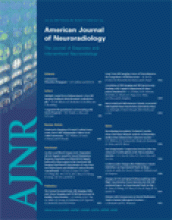Abstract
BACKGROUND AND PURPOSE: Remodeling balloons are used to assist in endovascular coiling of aneurysms. We evaluated our experience with balloon-assisted coiling (BAC) in an attempt to determine whether this technique increased the rate of thrombus formation or symptomatic thromboembolic complications.
MATERIALS AND METHODS: In 3 years, we treated 221 patients with intracranial aneurysms. Statistical analysis was performed to assess whether BAC increased the rate of thrombus formation or symptomatic thromboembolic complications. Patient demographics, aneurysm size, location, neck width, antiplatelet therapy, and rupture status were evaluated.
RESULTS: We detected no statistically significant difference in rates of thrombus formation (14% versus 9% with and without BAC, respectively, P = 0.35) or symptomatic thromboembolic events (7% versus 5% with and without BAC, respectively, P = 0.76), though our power to detect small differences was limited. There was also no correlation with age, sex, rupture status, aneurysm size, or location. There was a significant increase in the rates of thrombus formation (6% versus 16%, P = 0.02) and symptomatic thromboembolic complications (3% versus 10%, P = 0.04) in aneurysms that were classified as narrow- or wide-necked, respectively. The use of clopidogrel was associated with a decrease in the rate of complications (P = 0.01).
CONCLUSION: In this series, we detected no significant increase in the rates of either intraprocedural thrombus formation or symptomatic thromboembolic events in patients treated with BAC. Larger studies are required to confirm our observations. Wide-necked aneurysms were independently associated with increased rates of thrombus formation and symptomatic thromboembolic complications, whereas the use of clopidogrel was protective (P = 0.01).
- Copyright © American Society of Neuroradiology












